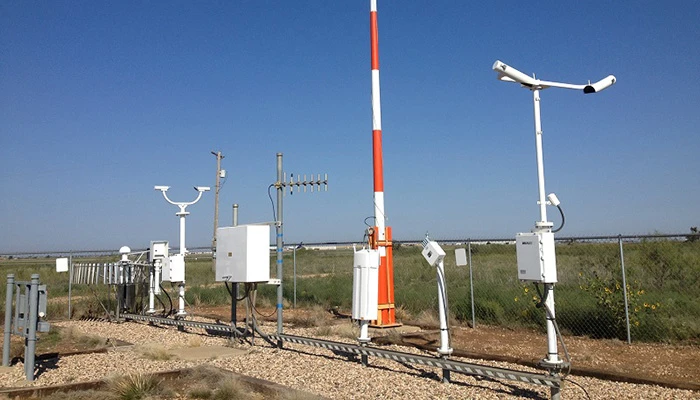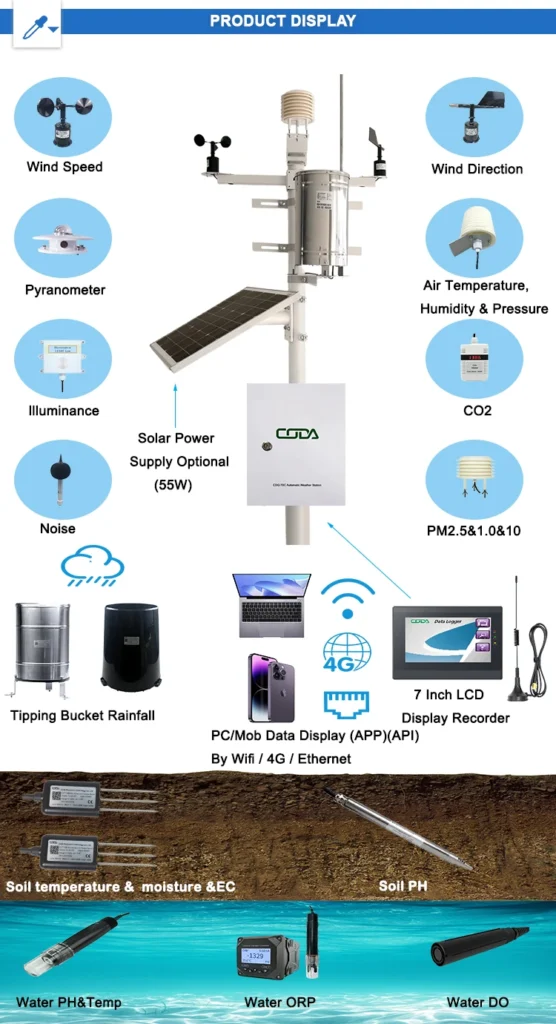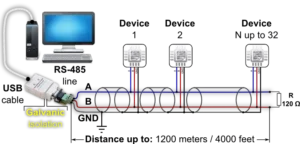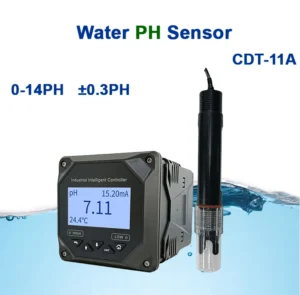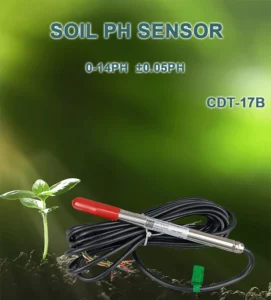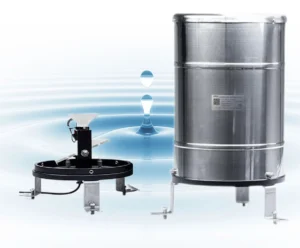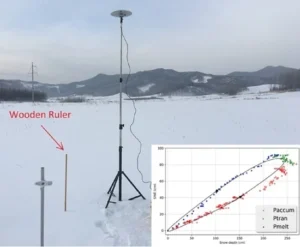How do automatic weather stations differ from handheld weather stations?
A weather station is a tool that checks and records weather conditions. It provides information on temperature, humidity, wind speed, wind direction, air pressure, and rainfall.
These facilities are very important for weather forecasting, climate research, and agricultural planning. They also help with aviation safety and navigation. They do this by collecting and analyzing weather data.
An automatic weather station is a smart device. It can measure, process, and send weather information on its own, without help from people.
The system has weather sensors, small data collectors, power supplies (like solar panels or batteries), and communication tools. It gives constant and accurate readings of many factors. These include wind speed and direction, rainfall, temperature, humidity, light intensity, soil conditions, and evapotranspiration.
Automatic weather stations are great for getting accurate data over long periods. They are used in many fields, like farming, environmental checks, transportation, and scientific studies.
Some key features of automatic weather stations are their high automation. This allows for ongoing measurement. They can send data from a distance using wired or wireless connections.
They are reliable for long-term use. Also adapt to many different uses.
A handheld weather station is a small, portable device. It is simple to use. It has different sensors to measure things like wind speed, wind direction, temperature, humidity, dew point, and altitude.
Its small size and light weight make it great for real-time measurements in the field or special places. These tools run on rechargeable batteries and are important for weather monitors doing outdoor assessments.
Handheld weather stations have key features. They are portable, making them easy to carry and use. They provide quick readings anywhere.
However, they have fewer functions than automatic stations. They also need battery power to work.
types of weather stations
Both types of weather stations give useful weather data, but they are different in how they work and how we use them.
1. **Functions and Applications**
– **Automatic Weather Stations**: These are advanced tools that measure different weather conditions. They are useful for situations that need constant checking and accuracy. This is important in fields like science, farming, forestry, and transportation.
– **Handheld Weather Stations**: Compact and practical tools made for field studies and collecting data in real time. Even though they are not as good as automatic ones, they are important for gathering local weather data. This is especially true during outdoor trips.
2. **Installation Mode**
– **Automatic Weather Station:** These stations are usually set up in one place. They send data using wired or wireless methods.
– **Handheld Weather Station:** No installation is required. They are portable and can be used in many places.
3. **Functionality and Data Transmission**
– **Automatic Weather Station:** These stations measure basic weather data. They track temperature, humidity, wind speed, and wind direction. Also have special sensors, such as radiation sensors and soil moisture sensors.
They support both wired and wireless data transfers. This allows real-time uploads to servers or cloud platforms for remote monitoring and analysis.
– **Handheld Weather Station:** These devices can measure many weather factors. They are designed to be portable and easy to use.
They often have wireless options like 4G, 5G, or Bluetooth. This allows users to connect to mobile apps. Users can access and analyze data while they are on the go.
4. **Data Storage and Processing**
– **Automatic Weather Station:** It has a lot of internal flash memory. It also has options for external storage, like memory cards. This gives you a lot of space to store data for a long time. These stations also have strong power for initial data analysis.
– **Handheld Weather Station:** It has less storage, but it sends data in real-time. Users can download and view information right away to meet their needs.
5. **Usage Scenarios**
– **Automatic Weather Station:** This tool is used for weather forecasting, farming, forestry, and monitoring the environment. It helps manage water, conduct geological surveys, and support scientific research. It gives important weather data for a long time. These stations also help industries that need constant monitoring of the environment.
– **Handheld Weather Station:** Perfect for quick weather updates. Use it for sports events, outdoor activities, emergencies, farming, and field research that needs fast data.
6. **Design and Portability**
– **Automatic Weather Station:** These systems are meant for permanent installation. They are bigger and have more complex designs. Weather Station use several sensors for long-term, unattended use. They are built for long-term weather monitoring.
– **Handheld Weather Station:** These devices are small and light. They are easy to carry and use. Their small size makes them great for taking measurements at different places.
7. **Power Supply and Efficiency**
– **Automatic Weather Station:** The system has stable power sources like solar panels and rechargeable batteries. This ensures it works reliably for a long time.
– **Handheld Weather Station:** This device is energy efficient and has built-in lithium batteries. These batteries include charging protection and low-voltage alerts. The station is made for easy mobile use.
8. **Size and Portability**
– **Automatic Weather Station:** Larger in size and designed for fixed installation.
– **Handheld Weather Station:** It is small and easy to carry.
9. **Measurement Range and Accuracy**
– **Automatic Weather Station:** Can measure a broader range of weather parameters with higher precision.
– **Handheld Weather Station:** Measures fewer factors and is a bit less accurate than automatic stations.
**Conclusion**
Automatic and handheld weather stations have clear differences in how they work, how they are set up, and how they process data. Automatic weather stations are designed for fixed locations.
They collect data all the time for long periods. Handheld weather stations are designed for mobile use. They give quick weather information when needed.
These systems have different designs and goals. However, they work together to meet many weather monitoring needs.
Automatic weather stations are great for long-term, precise monitoring at fixed locations. Handheld weather stations are great for mobile situations where you need quick data.
Each type has unique benefits. This lets users choose the right equipment for their weather monitoring and data collection needs.
